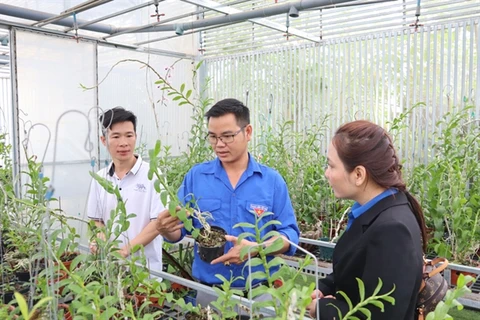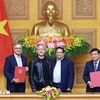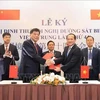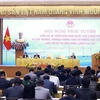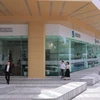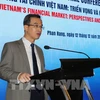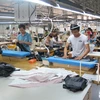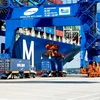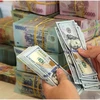 Chairman of the Lam Dong People’s Committee Tran Van Hiep introduces agricultural products of the province at the event (Photo: VNA)
Chairman of the Lam Dong People’s Committee Tran Van Hiep introduces agricultural products of the province at the event (Photo: VNA) The event was co-organised by a visiting delegation from the province and the Vietnamese Embassy in Australia.
Addressing the function, Chairman of the provincial People’s Committee Tran Van Hiep said Lam Dong’s export value to Australia remains low, accounting for only about 0.2% of the province's total export turnover. Lam Dong ships mainly green coffee beans, fresh flowers and cashew nuts to Australia, he noted.
The leader called on Australian businesses to look at trade opportunities with his province, and pledged to provide the best conditions possible for the smooth development of new partnerships.
Hiep said that Australia has strengths in technology, while Lam Dong possesses resources and a favourable environment for the development of high-tech agriculture. He proposed that the government and enterprises in Sydney consider supporting technology transfer to the Vietnamese locality.
Echoing the view, Consul General of Vietnam in New South Wales, South Australia and Queensland Nguyen Dang Thang said that Vietnam-Australia ties are increasingly growing closer, covering many economic, political and social aspects. In the first 10 months of 2022, the bilateral trade value hit over 13.3 billion USD, exceeding the total figure for the entire 2021.
The diplomat called on Vietnamese and Australian firms to jointly make better use of their potential to lift bilateral trade to new heights.
As part of the event, a trade fair was held showcasing farm produce from Lam Dong, such as Oolong tea, coffee, jam, peppercorns, and cashew nuts./.
VNA

